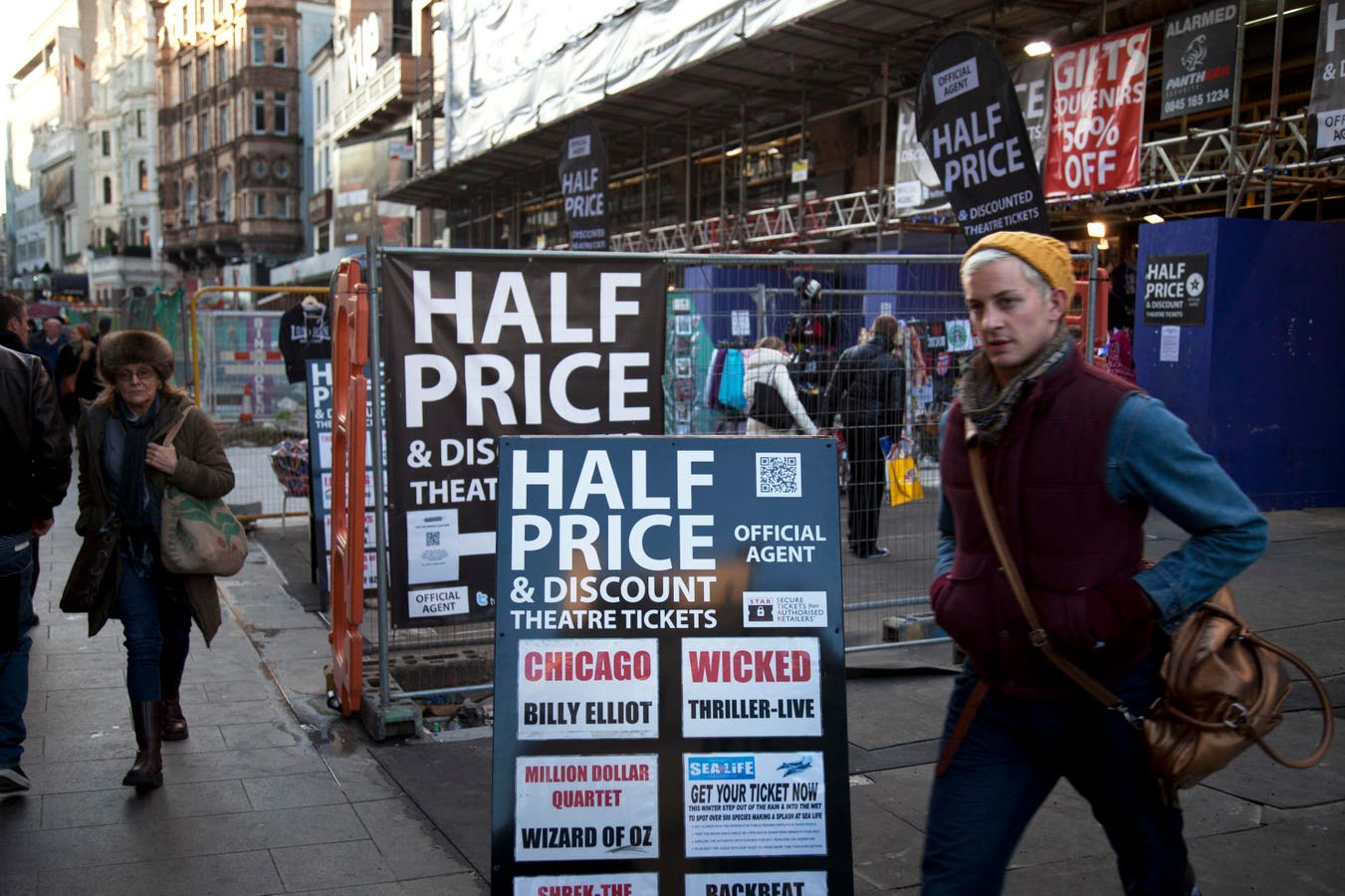The idea that there is an “affordability crisis” is gaining traction among politicians, pundits, and policymakers. The common sentiment that inflation and the runaway cost of basic goods—food, gas, and other necessities—has become a widespread alarm, working its way into recent elections and political sound bites. When consistently high costs for childcare, health care, and housing are factored into this picture, it leaves many consumers in dire straits.
Experts point to a variety of solutions for this affordability crisis. Lowering interest rates, improving the nation’s housing stock, and federally subsidized care are a few. These big-picture approaches are steps that could help address runaway costs and the increasing difficulties they pose for most people. But there is also room to consider how the current picture of work and employment contributes to an affordability crisis as well.

Half price tickets to Theatre shows in the West End on sale at a discount ticket shop in Leicester Square in the heart of Theaterland. (Photo by Mike Kemp/In Pictures Ltd./Corbis via Getty Images)
Corbis via Getty ImagesEmployment and the Affordability Crisis
Recent data provided by the Bureau of Labor Statistics puts unemployment rates at 4%. This may seem promising as it suggests that relatively low numbers of Americans are out of work. Though employment is a key measure of a viable economy, unemployment data by itself elides the types and quality of work to which many Americans have access. A closer look at the conditions that shape today’s work gives additional insight into why affordability remains out of reach for so many.
In the early 2000s, sociologist Arne Kalleberg observed a disturbing trend in the way work and jobs were shifting. Analyzing employment systems over several decades, Kalleberg found that not only was income inequality widening, but so was the divide between jobs that offered benefits, security, good wages, opportunities for growth, and those that did not. Succinctly describing this as the gap between “good jobs” and “bad jobs,” Kalleberg suggests that the types of jobs that were commonplace in the middle of the 20thcentury—jobs that allowed for social mobility, permitted (mostly white male) workers to raise families on one income, and came with comfortable benefits—are the “good jobs” that are the foundation of economic security. Towards the end of the 20th century, however, factors like globalization, deregulation, and shrinking worker power began to take a toll, and the impact they had was to make these good jobs increasingly scarce. In their wake came the “bad jobs”—the precarious, uncertain positions that provided employment, but not much else. These jobs, often contract-based, without job protections, a guarantee of long-term employment, or the potential for a career trajectory within a company, became more widespread and commonplace. And they left many workers in situations where they had employment, but not necessarily the stability, perks, or benefits that accompany it.
Though Kalleberg saw a gap between good and bad jobs, it’s important to note that the characteristics of bad jobs have become more widespread, even encroaching into what previously would have been considered good jobs. In tech and finance, for instance, even high-earning workers can find themselves on contract-based positions that preclude long-term job security. Universities have also moved away from the tenure model that formed the basis of employment for faculty for decades, in favor of adjunct or non-tenure line positions that do not come with the same protections or benefits. There are still good jobs out there, but they have become increasingly rare, hard to attain, and limited to highly specialized workers.
WASHINGTON, DC – FEBRUARY 05: Protesters rally outside of the Theodore Roosevelt Federal Building headquarters of the U.S. Office of Personnel Management on February 05, 2025 in Washington, DC. The group of federal employees and supporters are protesting against Elon Musk, tech billionaire and head of the Department of Government Efficiency (DOGE), and his aids who have been given access to federal employee personal data and have allegedly locked out career civil servants from the OPM computer systems. (Photo by Alex Wong/Getty Images)
Getty ImagesGood Jobs, Bad Jobs, and Affordability
How then might the rise of bad jobs connect to our current affordability crisis? One key component of these bad jobs is that they often fail to provide workers with competitive wages. It’s not hard to see how, in an economy increasingly powered by bad jobs, workers would face difficulty building the reserves they need to pursue home ownership, afford childcare, or even weather higher prices brought on by inflation. The paucity of good jobs means that workers also have few alternatives to which to turn. Furthermore, those who are fortunate enough to secure good jobs are not necessarily exempt from the affordability crisis. The impermanence and geographic restrictions associated with many of these jobs can mean that even workers in better paying, higher-status jobs still may have difficulties affording the basics of modern life, much less the luxuries that might seem to be byproducts of the positions they hold. Put another way, if a good job comes with few protections, no long-term job security, and return-to-office mandates (especially if these jobs are located in an expensive part of the country), fundamentals like high-quality child care, housing, and insurance could still put a hefty strain on a budget.
Current discussions about the affordability crisis are an important means of focusing attention on the ways more and more Americans are chafing at rising costs. Big-picture solutions to bring down costs and make everyday life more affordable are certainly key steps to solving this problem. But our current structure of work contributes to this crisis as well. Creating more good jobs should be another part of resolving this problem.

